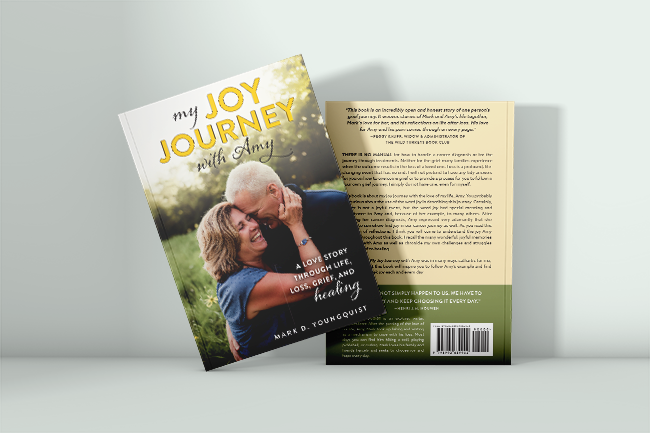Just a few days before Amy was diagnosed with cancer, my mother passed away from rapidly progressive dementia. She advanced from a relatively normal mental state over the holidays of 2021 to very visible symptoms of memory loss and personality and behavioral changes by the beginning of the following summer. She became disorientated and could not make simple choices presented to her nor could she remember my brother’s or my name.
By mid-June she had entered palliative and hospice care. Her health continued to deteriorate, and our family gathered by her bedside. We took turns holding vigil next to her bedside along with my father. My parents had just marked their 60th wedding anniversary a month earlier. It was apparent my mother would pass within a matter of days or weeks. During one of my visits with my father by her bedside, he broke down. His face contorted with pain as he confronted the loss of his love.
I am ashamed that at the time my reaction was not very sensitive. I could understand his grief, but I had a hard time grasping how he could lose control over his emotions to the point where he could let his pain be displayed so publicly and unfiltered. After all, my mother had lived a relatively full life and was 80 years old when she passed away. Fortunately, I kept my feelings to myself.
Sixteen months later I lost Amy and found myself displaying those same contorted facial expressions of pain I observed on my father’s countenance. I’ve long since apologized to my departed father for my lack of empathy.
I still struggle to contain my own emotions. Even today almost two and a half years later, if I am in front of a mirror when my grief is triggered, I stare at my face in astonishment at my own inability to control my facial expressions as it contorts in pain.
It seems odd to me that we as humans find it so easy to display our positive emotions such as joy, gratitude, happiness, pride, excitement, love, and serenity. But we tend to hide our negative emotions such as fear, sadness, jealousy, insecurity, and disappointment behind an impenetrable veneer. We let the positive emotions spring forth without a thought but attempt to hide and bottle up any negative thoughts and emotions. Taken to an extreme, I know the unbridled showing of emotion without filters would make the world a much less pleasant place to inhabit. I suspect, however, this shield against letting negative emotions out can contribute to the deterioration of our mental health.
This afternoon I had lunch with a friend who shared their hurt and guilt at losing a friend to suicide after the loss of their spouse. He had no idea his friend was suffering to such a degree and wished he had somehow been able see through his friend’s veneer to help. I admire that he has taken it upon himself to educate himself about grief and become involved in his church’s outreach to those struggling with loss whether it be a child, parent, friend, or spouse.
The reflections on My Joy Journey of Hope have made my life an open book as I struggle with loss. But I will admit from time to time, I hide behind my own veneer. I’ve kept my darkest thoughts and emotions to myself and have not shared them with friends or family.
My willingness to share this with you is not meant to cause alarm amongst my family and friends. Overall, I believe I continue to trend in a positive direction.
Instead, I would like to encourage all of you to reach out to those you love to probe a little deeper. To see what is hiding behind their veneers and offer them your love and support.
If you need help, speak with someone today. Reach out to a friend or call 988, the suicide and crisis lifeline available 24 hours a day. Asking for help is not a weakness. Let’s take care of each other.
Thank you for reading My Joy Journey of Hope. I am always interested in hearing your thoughts and reactions to these Reflections. Please complete the form below to communicate those to me. Thank you for following my joy journey.

